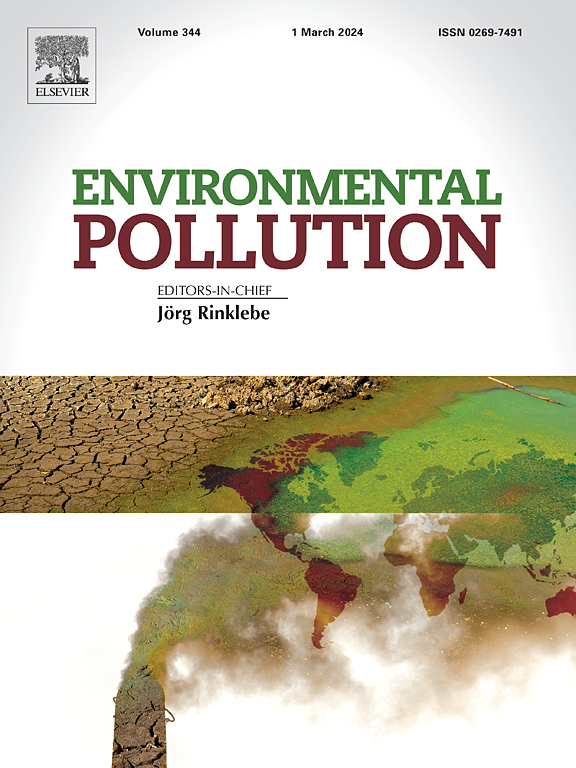Mechanism of earthworm coelomic fluid inhibits multidrug-resistant bacteria and blocks resistance transmission
IF 7.6
2区 环境科学与生态学
Q1 ENVIRONMENTAL SCIENCES
引用次数: 0
Abstract
Antibiotic resistance is a growing global health crisis, especially the spread of multi-drug resistance. In this study, the inhibitory effects of earthworm coelomic fluid (ECF) on multidrug-resistant bacteria (MRB) were investigated during employing vermicomposting to treat excess sludge generated from wastewater treatment. The results demonstrated that the ECF was able to inhibit, even completely decompose the MRB. Notably, when the ECF concentration reached 1.0 mg/mL, the intracellular reactive oxygen species (ROS) level increased by 46.7%, while cell viability decreased by 55.2% compared to the control, demonstrating that ECF exerts strong antibacterial activity by inducing oxidative stress and disrupting cellular homeostasis. Furthermore, ECF effectively degraded the DNA of MRB, with removal rates of aphA, KanR, and tetA reaching 51.8%, 42.3%, and 35.0%, respectively, indicating its ability to eliminate resistance genes and hinder their potential transfer. Additionally, the upregulation of genes involved in signaling, DNA replication and repair, and energy metabolism pathways suggests a systemic stress response in MRB, further supporting the broad-spectrum inhibitory effects of ECF on bacterial viability and resistance maintenance.. Taken together, these findings may open a door to naturally and ecologically combat antibiotic resistance in pollutants control in wastewater treatment.

蚯蚓体腔液抑制多重耐药细菌及阻断耐药传播的机制
抗生素耐药性是一个日益严重的全球健康危机,特别是多药耐药性的蔓延。在本研究中,研究了蚯蚓体腔液(ECF)在蚯蚓堆肥处理污水处理产生的多余污泥过程中对多药耐药菌(MRB)的抑制作用。结果表明,ECF能够抑制甚至完全分解MRB。值得注意的是,当ECF浓度达到1.0 mg/mL时,细胞内活性氧(ROS)水平较对照升高46.7%,而细胞活力下降55.2%,表明ECF通过诱导氧化应激和破坏细胞稳态发挥了较强的抗菌活性。此外,ECF有效降解MRB的DNA,对aphA、KanR和tetA的去除率分别达到51.8%、42.3%和35.0%,表明其能够消除耐药基因并阻碍其潜在转移。此外,参与信号传导、DNA复制和修复以及能量代谢途径的基因上调表明,MRB中存在系统性应激反应,进一步支持ECF对细菌活力和耐药性维持的广谱抑制作用。总之,这些发现可能为自然和生态地对抗废水处理中污染物控制中的抗生素耐药性打开了一扇门。
本文章由计算机程序翻译,如有差异,请以英文原文为准。
求助全文
约1分钟内获得全文
求助全文
来源期刊

Environmental Pollution
环境科学-环境科学
CiteScore
16.00
自引率
6.70%
发文量
2082
审稿时长
2.9 months
期刊介绍:
Environmental Pollution is an international peer-reviewed journal that publishes high-quality research papers and review articles covering all aspects of environmental pollution and its impacts on ecosystems and human health.
Subject areas include, but are not limited to:
• Sources and occurrences of pollutants that are clearly defined and measured in environmental compartments, food and food-related items, and human bodies;
• Interlinks between contaminant exposure and biological, ecological, and human health effects, including those of climate change;
• Contaminants of emerging concerns (including but not limited to antibiotic resistant microorganisms or genes, microplastics/nanoplastics, electronic wastes, light, and noise) and/or their biological, ecological, or human health effects;
• Laboratory and field studies on the remediation/mitigation of environmental pollution via new techniques and with clear links to biological, ecological, or human health effects;
• Modeling of pollution processes, patterns, or trends that is of clear environmental and/or human health interest;
• New techniques that measure and examine environmental occurrences, transport, behavior, and effects of pollutants within the environment or the laboratory, provided that they can be clearly used to address problems within regional or global environmental compartments.
 求助内容:
求助内容: 应助结果提醒方式:
应助结果提醒方式:


